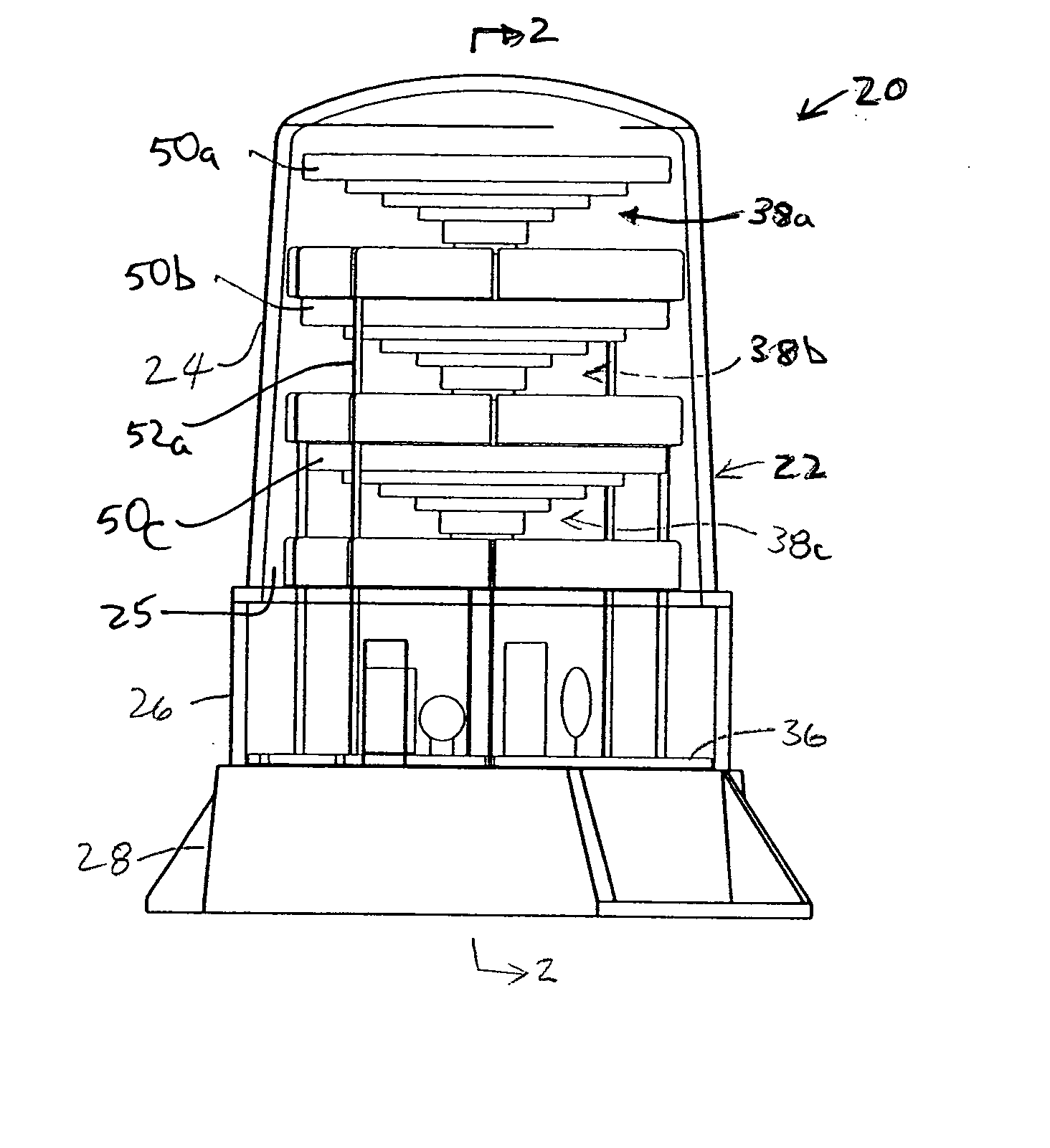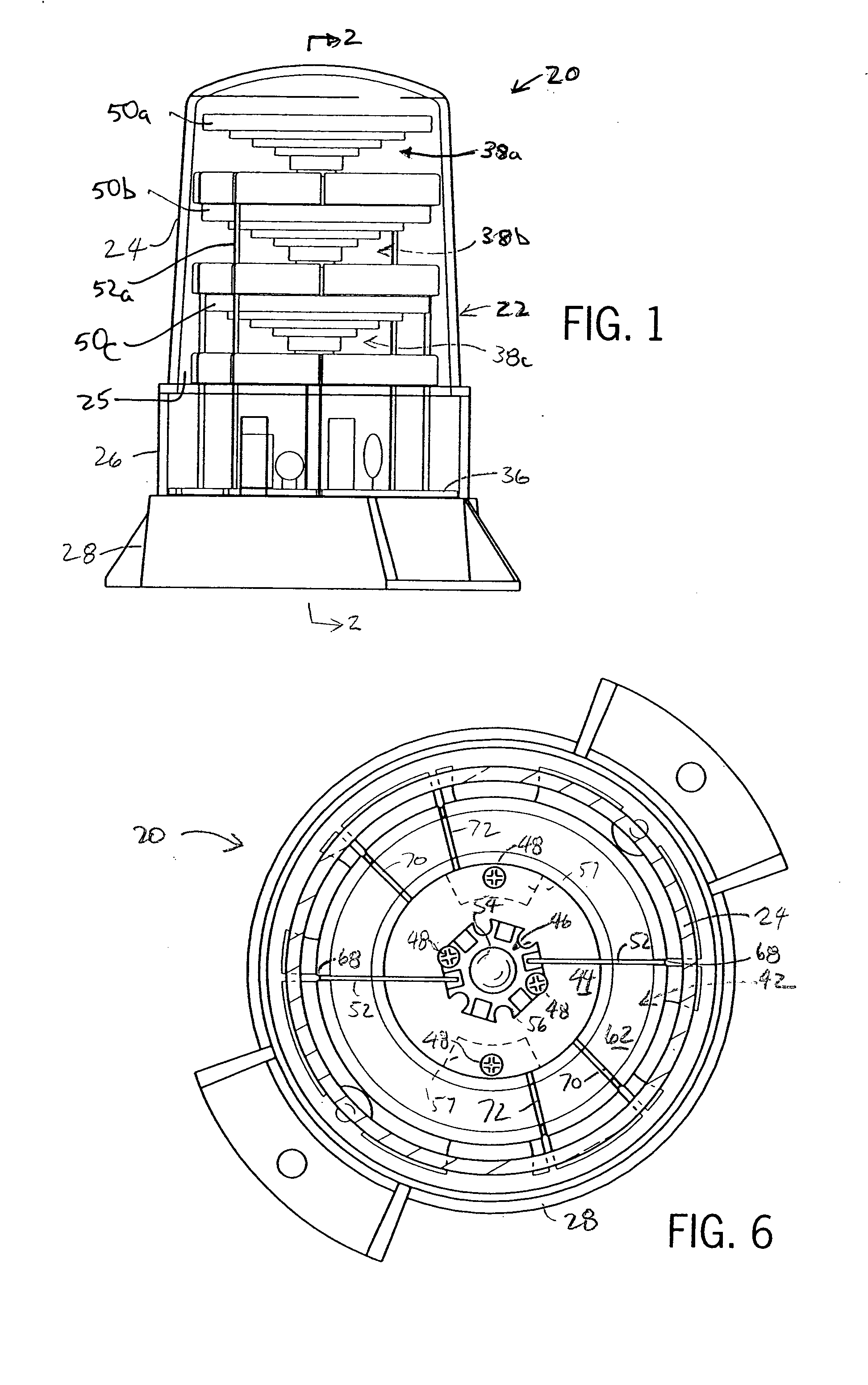Modular LED light and method
a module-type, led light technology, applied in the direction of lighting applications, light source combinations, lighting, etc., can solve the problems of less than optimal efficiency of bulb-type devices, limited energy available, and large heat dissipation of bulb-type devices, and achieve simple, inexpensive and aesthetically pleasing manners. , the effect of simple housing configuration
- Summary
- Abstract
- Description
- Claims
- Application Information
AI Technical Summary
Benefits of technology
Problems solved by technology
Method used
Image
Examples
Embodiment Construction
[0047] In the description that follows, while the light configurations described may be positioned in virtually any orientation (e.g., upright, on an angle, upside-down, etc.), in the interest of simplifying this explanation, relative directions and juxtapositions (e.g., top, bottom, left, right, above, etc.) will be indicated assuming the orientation illustrated in FIGS. 1 and 2.
[0048] The present invention will now be described in detail with reference to the figures, which show preferred light configurations. Referring to FIGS. 1-3, a first exemplary light assembly 20 includes a mounting member 28, an electronics housing member 26, a cover member 24, electronic driving circuitry 36 and three separate optical modules including an upper module 38a, a middle module 38b and a lower module 38c. Referring to FIGS. 1 and 2, mounting member 28 is generally a cylindrical rigid plastic member which forms an upwardly facing surface 37 and some type of mechanical structure for mounting asse...
PUM
 Login to View More
Login to View More Abstract
Description
Claims
Application Information
 Login to View More
Login to View More - R&D
- Intellectual Property
- Life Sciences
- Materials
- Tech Scout
- Unparalleled Data Quality
- Higher Quality Content
- 60% Fewer Hallucinations
Browse by: Latest US Patents, China's latest patents, Technical Efficacy Thesaurus, Application Domain, Technology Topic, Popular Technical Reports.
© 2025 PatSnap. All rights reserved.Legal|Privacy policy|Modern Slavery Act Transparency Statement|Sitemap|About US| Contact US: help@patsnap.com



